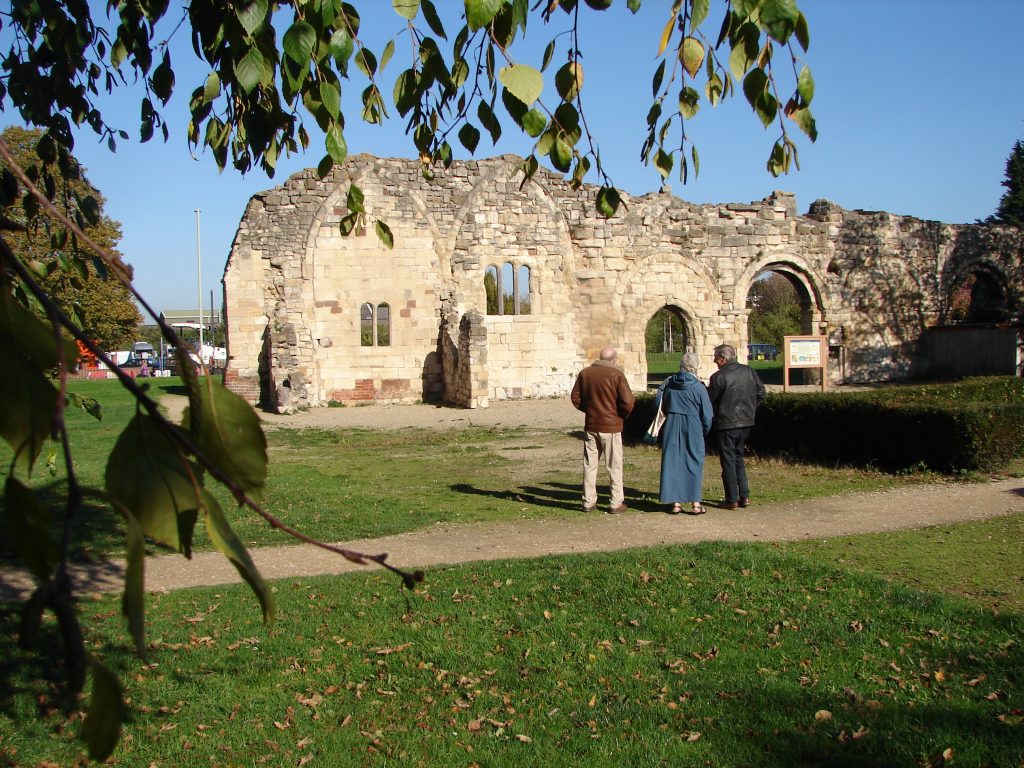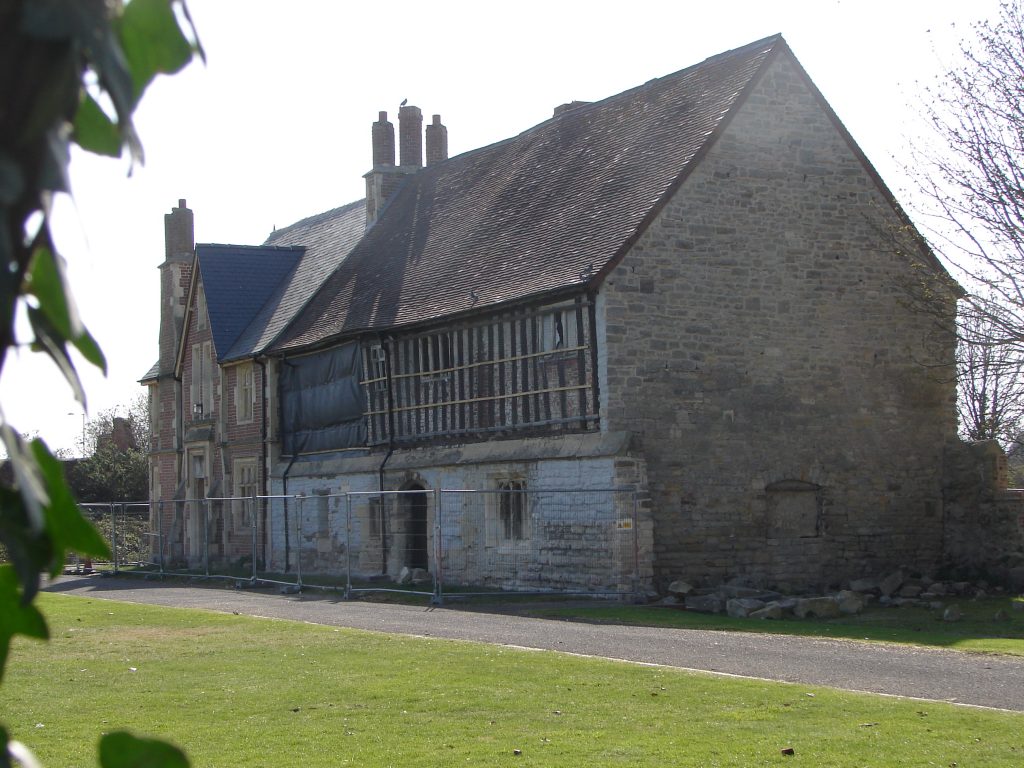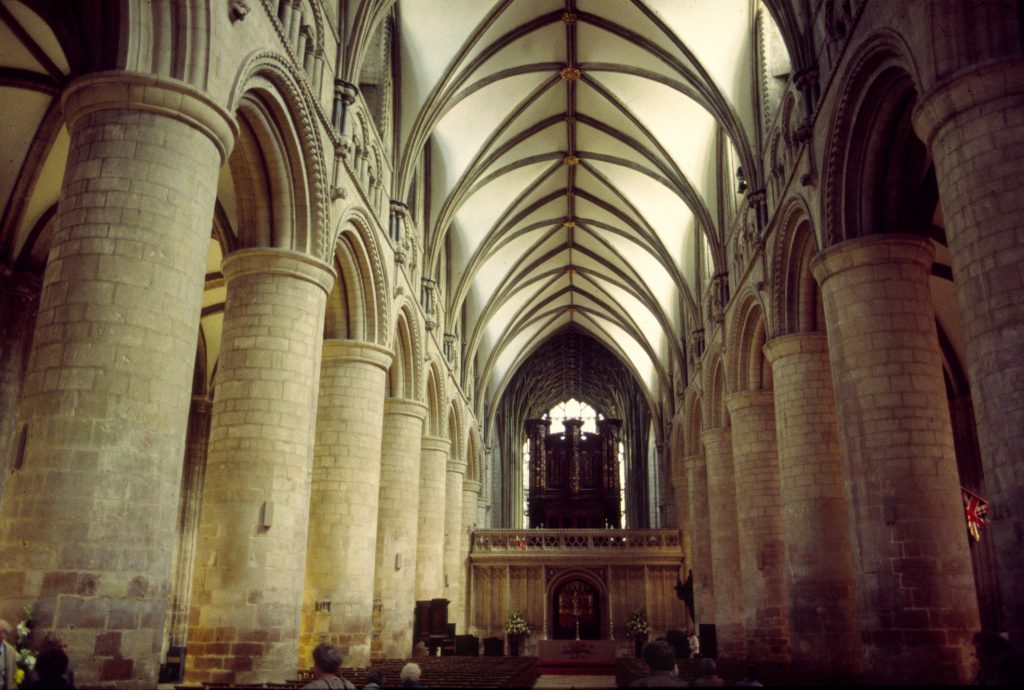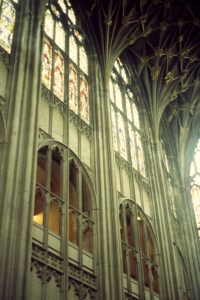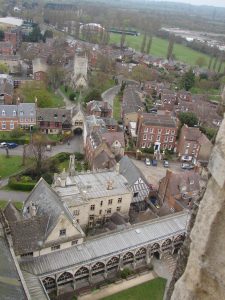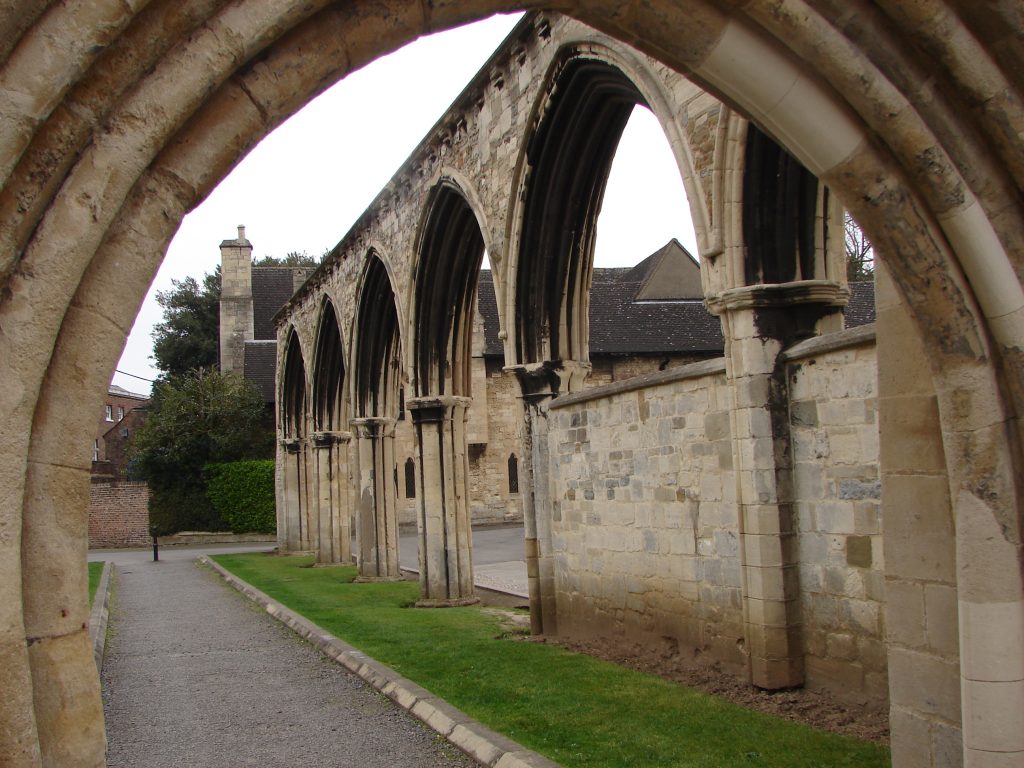My last blog posting began a discussion of surviving medieval buildings in the city of Gloucester. It focused on the Abbey of Saint Peter which became Gloucester Cathedral at the time of the Dissolution of the Monasteries by King Henry VIII. Gloucester is the setting in 1392 for my third novel in the Lady Apollonia West Country Mysteries Series, Momento Mori. In this post, however, I would like to call your attention to other medieval monastic buildings which still stand in Gloucester or survive as ruins.
Saint Oswald’s Priory is my starting point because it, like Saint Peter’s, plays an important role in my story. The ruins of the abbey, viewed from its south side, are shown above in a picture taken in 2018. I am standing between two Phil’s: Phillip Brockington, a friend and traveling companion from Indiana on the left and Philip Moss, a well-known Gloucester historian and friend, on the right. Saint Oswald’s Priory was originally a minster dedicated to Saint Peter when it was founded in the 9th century, but the dedication of the priory was changed to Saint Oswald when the saint’s bones were translated there from Bardney Abbey in Lincolnshire in AD 909.
The priory gradually declined through the centuries before the dissolution of the monasteries in the sixteenth century by King Henry VIII. That decline enabled me to make it the base location for one of the criminal gangs which are an important part of the story of Memento Mori.
The city of Gloucester had three mendicant orders of friars in 1392 at the time of my novel. These orders arose in Europe, primarily in the 13th century, based on a different monastic model: instead of the traditional isolation of monks in their communities, these orders adopted a lifestyle of poverty, traveling, and living in urban areas. Their purpose was preaching, evangelization, and ministry, especially to the poor of their communities. They were an important part of life in Gloucester, though not directly involved in the plot of Memento Mori. All three of these orders were supported by King Henry III in the 13th century after his coronation in Gloucester at the Abbey of Saint Peter. Henry III was the only English monarch since the Norman Conquest to be crowned outside Westminster. Perhaps this special relationship with the city contributed to his support. Each of these orders are referenced by names based on the color of their robes.
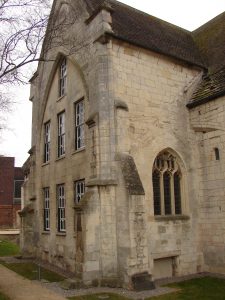 I begin with the Blackfriars, shown to the left, whose Gloucester facility on the south side of the city is the best surviving complete example of a Dominican House in Europe. We can thank its survival after the dissolution of the monasteries in the 16th century to its purchase by Sir Thomas Bell, a wealthy Gloucester capper and clothier who remodeled the church into his private residence, using its other buildings for his businesses.
I begin with the Blackfriars, shown to the left, whose Gloucester facility on the south side of the city is the best surviving complete example of a Dominican House in Europe. We can thank its survival after the dissolution of the monasteries in the 16th century to its purchase by Sir Thomas Bell, a wealthy Gloucester capper and clothier who remodeled the church into his private residence, using its other buildings for his businesses.
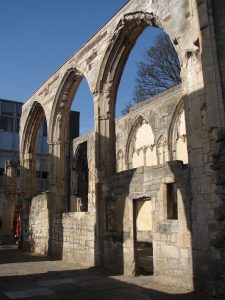 The Greyfriars were Franciscans who wore grey robes. Ruins from their house in the southeastern part of Gloucester are shown on the right. Finally, the Whitefriars were Carmelites whose house was thought to be near the North Gate of the city, but little was known about this monastery. Surprisingly, while preparing this posting, I learned of a current archaeological dig at the site of a demolished multi-level carpark near the north Gate. This has been established as the location of several of the Whitefriar buildings. My Gloucester historian friend, Philip Moss, received the final report of the archaeologists just days ago.
The Greyfriars were Franciscans who wore grey robes. Ruins from their house in the southeastern part of Gloucester are shown on the right. Finally, the Whitefriars were Carmelites whose house was thought to be near the North Gate of the city, but little was known about this monastery. Surprisingly, while preparing this posting, I learned of a current archaeological dig at the site of a demolished multi-level carpark near the north Gate. This has been established as the location of several of the Whitefriar buildings. My Gloucester historian friend, Philip Moss, received the final report of the archaeologists just days ago.
 Another local monastic institution of Gloucester was Llanthony Secunda Priory, founded in 1136 south of the medieval city wall of Gloucester in what is now the docks area of the city. It was a secondary house and refuge for Augustinian monks from Llanthony Priory in Wales. The surviving remains have been listed structures since 1952 with restoration occurring in 2013, the year after my husband, Lou, took the picture of some of those remains shown below in 2012.
Another local monastic institution of Gloucester was Llanthony Secunda Priory, founded in 1136 south of the medieval city wall of Gloucester in what is now the docks area of the city. It was a secondary house and refuge for Augustinian monks from Llanthony Priory in Wales. The surviving remains have been listed structures since 1952 with restoration occurring in 2013, the year after my husband, Lou, took the picture of some of those remains shown below in 2012.
Medieval Gloucester had more monastic orders than any other city in the West County of England. I hope you have found interesting this brief mention of them. In my next post, I will discuss medieval churches and other ancient buildings that play a role in Memento Mori.
